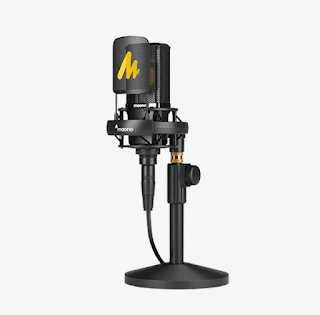Unleashing Professional Sound: A Guide to XLR Recording Microphones
In the realm of audio recording, capturing pristine sound is an art form, and having the right tools is paramount. For those aiming for professional-grade audio quality, XLR Recording microphone stand out as a top choice. In this guide, we'll delve into the world of XLR microphones, exploring their benefits, key features, and considerations for those seeking to elevate their recording setup.
- Unraveling the XLR Advantage:
XLR microphones are favored for
their ability to deliver high-quality audio recordings, making them a staple in
professional studios. The XLR connection, characterized by its three-pin
design, ensures a balanced signal transmission, minimizing interference and
delivering clean, clear audio.
- Superior Audio Quality:
One of the primary reasons
recording enthusiasts opt for XLR microphones is their unparalleled audio
quality. These microphones often boast a wider frequency response, capturing a
broader range of tones and nuances. The result is a richer, more detailed sound
that can make a significant difference, especially in professional audio
production.
- Versatility in Recording Patterns:
XLR microphones come with various
recording patterns, including cardioid, bidirectional, omnidirectional, and
stereo. This versatility allows users to choose the pattern that best suits
their recording environment and purpose. Whether you're recording a solo
podcast, conducting interviews, or capturing ambient sounds, there's an ideal
pattern for every scenario.
- External Power Requirements:
Unlike USB microphones, XLR
microphones require external power, commonly supplied by phantom power provided
by an audio interface or mixer. This additional power enhances the microphone's
performance and contributes to the delivery of high-fidelity audio. When
investing in an XLR microphone, ensure that your recording setup includes a
compatible power source.
- Audio Interface Considerations:
To connect an XLR microphone to a
computer or recording device, you'll need an audio interface. These devices
serve as the bridge between your microphone and the recording equipment,
converting the analog signal from the microphone into a digital signal that
your computer can process. When choosing an audio interface, consider factors
such as preamp quality, connectivity options, and the number of available
channels.
- Build Quality and Durability:
XLR microphones are designed for
professional use, and as such, they often feature robust construction and
durable materials. This ensures longevity and reliability, even in demanding
recording environments. Invest in a microphone that can withstand the rigors of
regular use and transportation.
- Brand and Model Selection:
Several reputable brands offer a
range of XLR microphones tailored to different recording needs. Brands like
Shure, Audio-Technica, and Neumann have established themselves as leaders in
the field. Research specific models, read user reviews, and consider your
recording requirements to find the XLR microphone that aligns with your goals.
- Cost Considerations:
While XLR microphones are
associated with professional-grade quality, they come at various price points.
Consider your budget and weigh it against the features and performance offered
by different models. It's often worthwhile to invest in a high-quality XLR
microphone, as the improvement in audio quality can be substantial.
For those passionate about
achieving the highest standard of audio quality in their recordings, an XLR
microphone is an indispensable tool. From superior sound capture to versatile
recording patterns, the advantages of XLR microphones are clear. By understanding
the key considerations, including power requirements, audio interface
compatibility, and brand reputation, you can confidently choose the perfect XLR
microphone to unlock your full creative potential and elevate your recording
endeavors.
For
more details, visit us :


Comments
Post a Comment